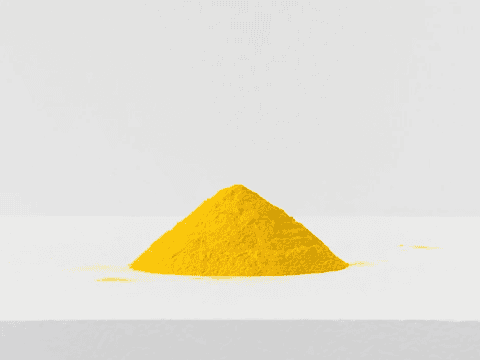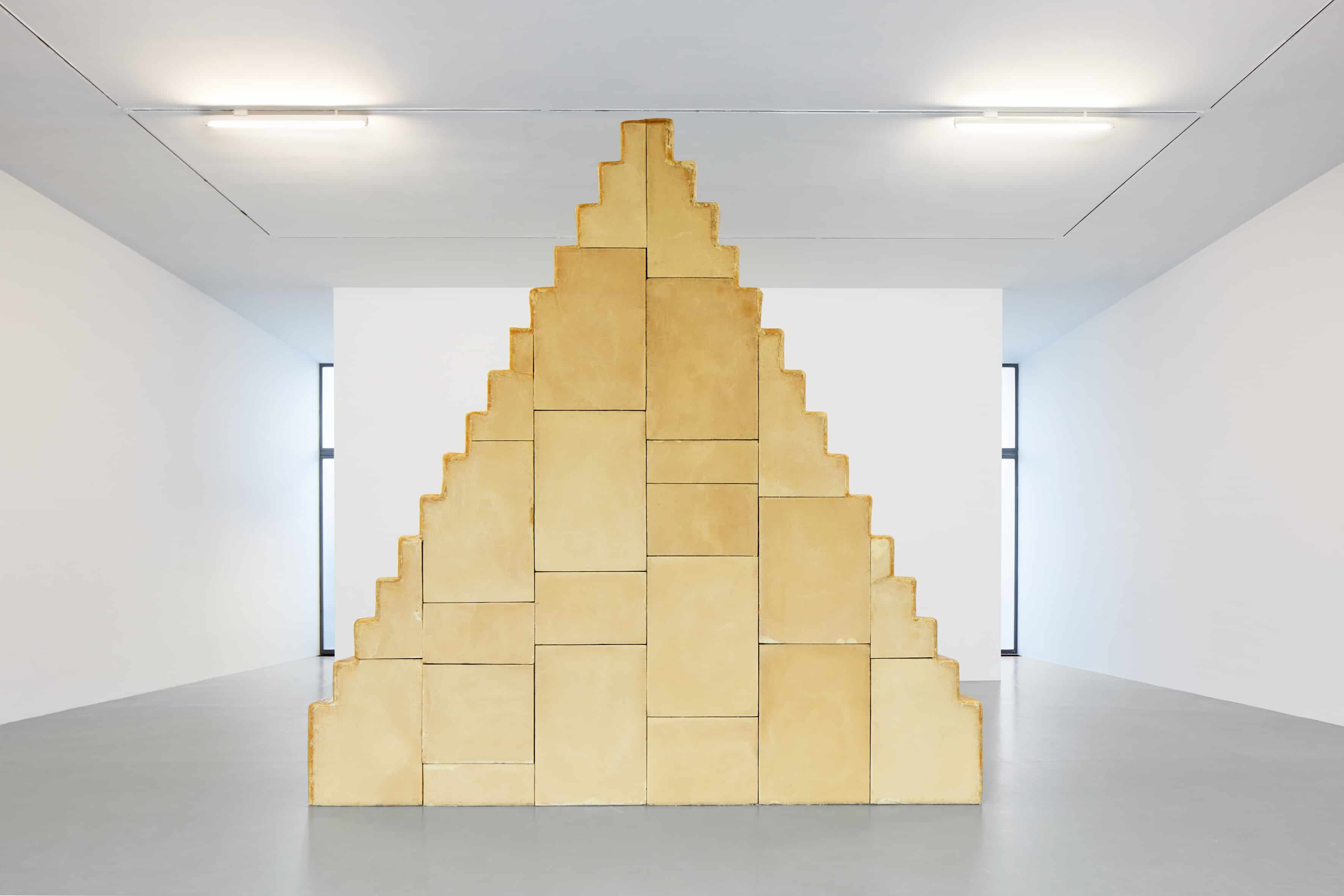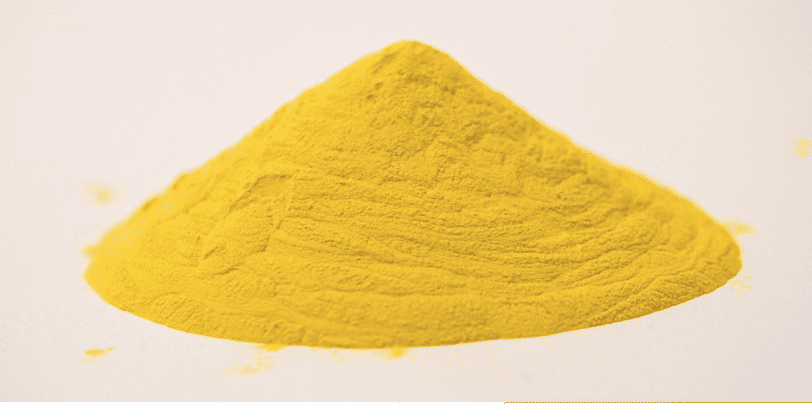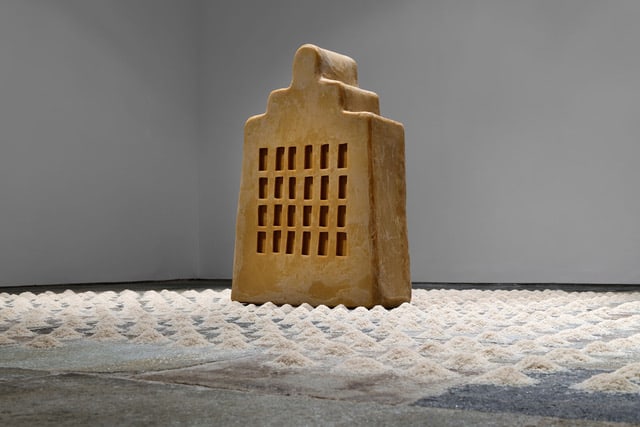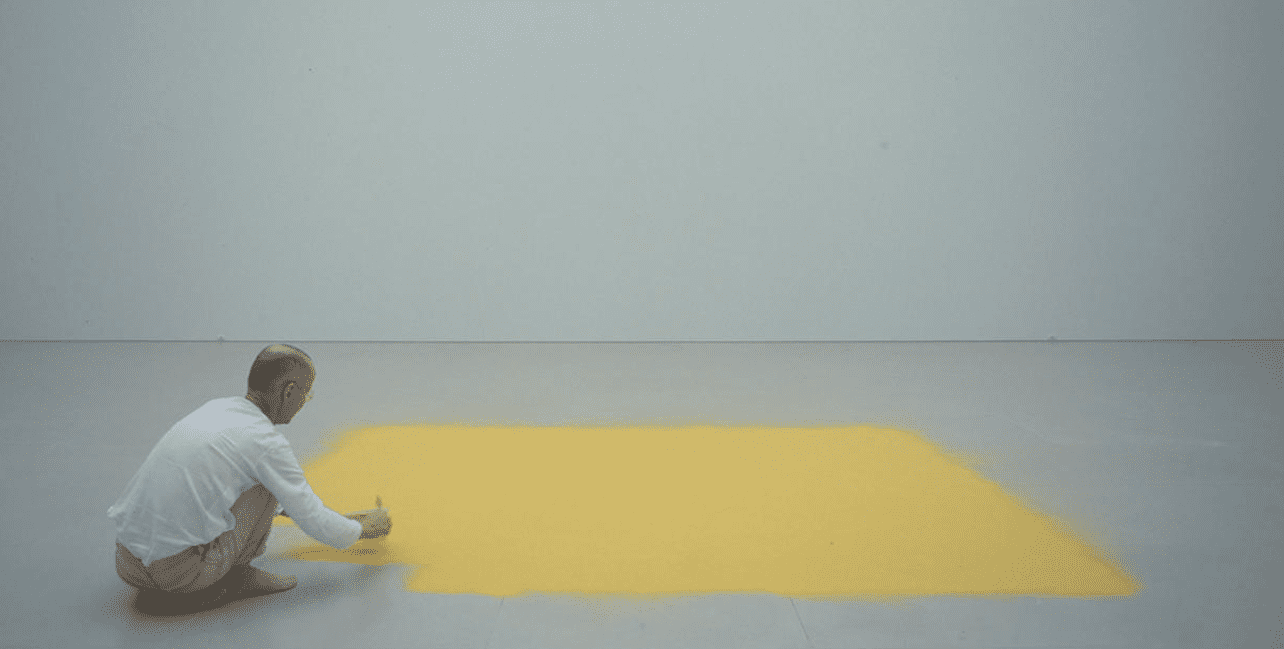Wolfgang Laib (b. Metzingen, Germany, 1950), lives and works between southern Germany, southern India, and New York. After studying medicine at the University of Tübingen, he devoted himself to art practice by creating sculptures and installations that seem to link past and present, the ephemeral and the eternal, using simple but highly symbolic organic materials usually associated with sustenance, such as pollen, milk, beeswax and rice.
His work has been presented at Documenta (1982, 1987) and the Venice Biennale (1997, 1999, 2019), while his first major institutional exhibition was held at the Musée d'art moderne de la ville de Paris (1986). He has subsequently been featured in numerous solo exhibitions, notably at the Hirshhorn Museum and Sculpture Garden in Washington (2002), the Dallas Museum of Art (2002), Haus der Kunst in Munich (2002-03), Fondation Beyeler in Basel (2005-06), Fondazione Merz in Turin (2009), and MMK Museum für Moderne Kunst in Frankfurt (2010).
His largest pollen work was installed in the atrium of MoMA New York in 2013. In the same year, the artist's first permanent installation, a beeswax room, opened at the Phillips Collection in Washington, DC, and in 2014, he created a 40m-long permanent underground beeswax chamber in Anselm Kiefer's La Ribaute studio in Barjac.
In 2015 he received the Praemium Imperiale in Tokyo.
In Florence, Italy, in 2019, the Museo del 900 presented his work at several historical sites: Convent of San Marco , Magi Chapel in Palazzo Medici Riccardi, Pazzi Chapel in Santa Crace and at the Rucellai Sepulchre in San Pancrazio.
In 2023, the Kunstmuseum Stuttgart dedicated a solo exhibition to his work and presented the documentary "Wolfgang Laib: Here, Now and Far Beyond."
WATCH THE FILM
